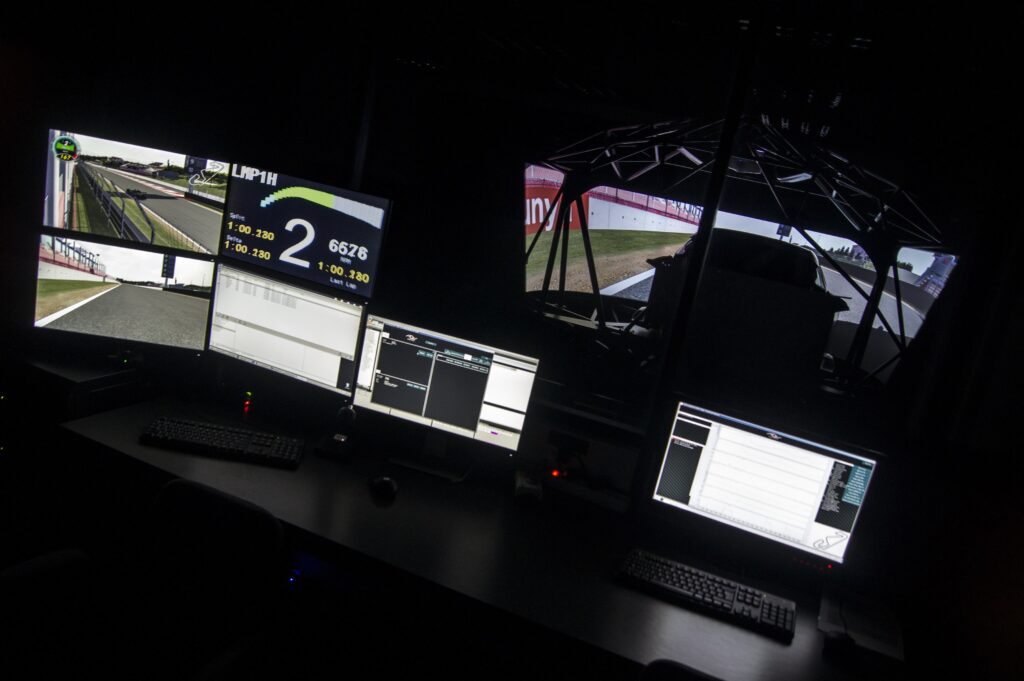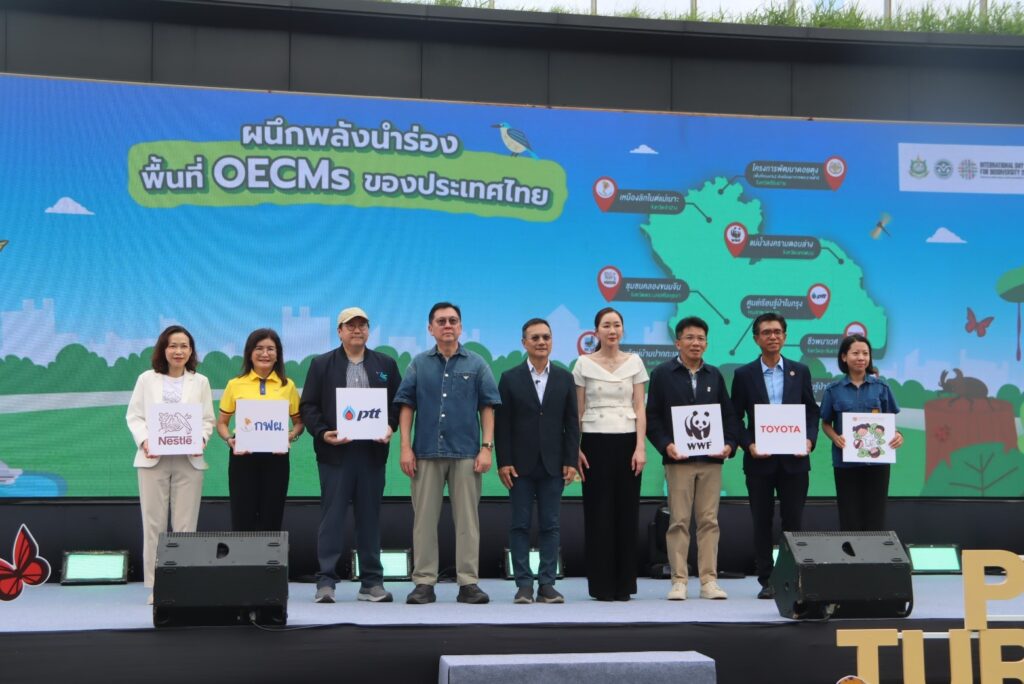
- เทคโนโลยีระบบจำลองเสมือนจริง (Simulation Technology) ช่วยขับเคลื่อนความก้าวหน้าด้านมอเตอร์สปอร์ตและอุตสาหกรรมยานยนต์ให้รุดหน้าเร็วขึ้น
- การที่มิชลินเข้าซื้อกิจการของ Canopy Simulations ซึ่งเป็นบริษัทชั้นนำที่มีความเชี่ยวชาญพิเศษด้านซอฟต์แวร์ระบบจำลองเสมือนจริง ส่งผลให้มั่นใจในประสิทธิภาพที่สมบูรณ์แบบของ “คนขับเสมือน” (Virtual Driver)
- มิชลินครองสถานะองค์กรที่ขับเคลื่อนด้วยข้อมูล (Data-Driven Company) และผู้บุกเบิกด้านระบบจำลองเสมือนจริง บนพื้นฐานของข้อมูลและความเชี่ยวชาญทางคณิตศาสตร์
ในการพัฒนายางล้อสำหรับรถแข่งหรือรถสปอร์ตที่ผลิตเพื่อจำหน่ายทั่วไป ระบบจำลองเสมือนจริงถือเป็นอุปกรณ์ที่มีคุณค่าอย่างยิ่ง ตัวอย่างหนึ่งที่เห็นได้ชัดคือการที่รถแข่งต้นแบบประเภท ‘ไฮเปอร์คาร์’ (Hypercar) ทุกคันที่ลงสนามแข่งรถรายการ ‘เลอ มังส์ 24 ชั่วโมง’ (Le Mans 24 Hours) ประจำปี 2566 จะได้รับการติดตั้งยางล้อซึ่งพัฒนาขึ้นอย่างเต็มรูปแบบด้วยซอฟต์แวร์ระบบจำลองเสมือนจริง (Simulation Software) โดยเทคโนโลยีระบบจำลองเสมือนจริงถือเป็นส่วนสำคัญในความสัมพันธ์ของมิชลินกับพันธมิตรในอุตสาหกรรมยานยนต์ เนื่องจากมีบทบาทที่จำเป็นอย่างยิ่งต่อการพัฒนายางสมรรถนะสูงที่ใช้เป็นยางมาตรฐานติดรถ เมื่อนำการสร้างแบบจำลองเชิงคณิตศาสตร์ (Mathematical Modelling) มาใช้ร่วมกับเครื่องจำลองเสมือนจริงทำให้สามารถกำหนดขนาดยางและเทคโนโลยีที่เหมาะสมที่สุดได้อย่างมีประสิทธิภาพ เพื่อให้ได้ยางล้อซึ่งมีคุณลักษณะทางเทคนิคและคุณสมบัติในการกระจายน้ำหนักที่เหมาะกับรถยนต์รุ่นใหม่แต่ละรุ่นโดยเฉพาะ

บนฐานของเทคโนโลยีการประมวลผลข้อมูลและอัลกอริทึมทางคณิตศาสตร์ขั้นสูง (Advanced Mathematical Algorithms) ระบบจำลองเสมือนจริงเป็นเครื่องมือที่ส่งเสริมสถานะความเป็นผู้นำทางเทคโนโลยีและองค์กรที่ขับเคลื่อนด้วยข้อมูลของมิชลินให้แข็งแกร่งยิ่งขึ้น โดยระบบจำลองเสมือนจริงไม่เพียงทำให้เกิดนวัตกรรมรองรับการสัญจรและการแข่งรถที่พัฒนาดีขึ้นเรื่อย ๆ ได้เร็วขึ้น ซึ่งส่งผลให้มิชลินทำงานร่วมกับพันธมิตรและผู้ผลิตยานยนต์ได้อย่างมีประสิทธิภาพสูงสุด แต่ยังช่วยลดผลกระทบด้านสิ่งแวดล้อมที่เกิดจากการวิจัยและพัฒนา ตลอดจนช่วยประหยัดค่าใช้จ่ายได้จริงเมื่อเทียบกับวงจรการพัฒนายางล้อแบบดั้งเดิมที่ใช้เวลายาวนานกว่า
ในเชิงรูปธรรม เทคโนโลยีดังกล่าวจำลองความเป็นจริงของระบบพลวัต (Dynamic Reality) บนฐานการปฏิสัมพันธ์ของแบบจำลองดิจิทัล 3 ชุด โดยแบบจำลองชุดแรกถอดแบบลักษณะเฉพาะและคุณสมบัติด้านการยึดเกาะของสนามแข่ง, แบบจำลองชุดที่สองถอดแบบคุณสมบัติของระบบช่วงล่างรถ (หรือแม้กระทั่งตัวรถทั้งคัน) และแบบจำลองชุดที่สามถอดแบบพฤติกรรมของยางล้อในรายละเอียดทุกอณูผู้ที่ควบคุมการขับขี่ในระบบจำลองเสมือนจริงสามารถทดสอบยางประเภทต่างๆ ผ่านการกำหนดค่า (Configurations) ที่มีให้เลือกมากมายหลายแบบเป็นพิเศษ ก่อนเสร็จสิ้นกระบวนการ ความประทับใจและความคิดเห็นส่วนตัวของผู้ขับขี่จะถูกนำมาพิจารณาร่วมกับข้อมูล (Objective Data) ซึ่งบันทึกโดยเครื่องจำลองเสมือนจริงขณะผู้ขับขี่ใช้งานเสมือนขับรถยนต์จริงบนสนามแข่งจริง

เมื่อผู้ขับขี่ปรับตัวจนคุ้นเคยกับพัฒนาการทางดิจิทัลนี้แล้ว จะมีศักยภาพเพิ่มขึ้นอย่างเห็นได้ชัด โดยผู้ขับขี่วัยหนุ่มสาวจะมีฝีมือการขับรถแข่งที่ดีขึ้น ขณะเดียวกันยังได้เก็บเกี่ยวทักษะที่เกี่ยวข้องกับระบบจำลองเสมือนจริงไปด้วย จึงเท่ากับเป็นการเชื่อมโยง “โลกจริง” และ “โลกเสมือน” เข้าด้วยกัน ซึ่งเป็นเรื่องสำคัญลำดับแรกสำหรับเทคโนโลยีระบบจำลองเสมือนจริง
การเข้าซื้อกิจการ Canopy Simulations…ผู้นำระดับโลกด้านระบบจำลองการทำเวลาต่อรอบเสมือนจริง
เมื่อเร็ว ๆ นี้ มิชลินได้เข้าซื้อกิจการของ Canopy Simulations ซึ่งเป็นผู้นำระดับโลกด้านระบบจำลองการทำเวลาต่อรอบเสมือนจริง บริษัทสัญชาติอังกฤษแห่งนี้เป็นผู้ทำตลาดอุปกรณ์ซอฟต์แวร์ระบบจำลองเสมือนจริงที่ล้ำสมัยมากที่สุด โดยระบบจำลองเสมือนจริงของ Canopy Solutions ซึ่งทำงานบนระบบคลาวน์ ผสานสนามแข่ง รถแข่ง และรุ่นยาง เข้ากับฟังก์ชั่นขั้นสูงในการกำหนดทิศทางการเคลื่อนที่ที่เหมาะสม (Trajectory Optimization) เพื่อแสดงผลการจำลองเสมือนจริงตามการป้อนข้อมูลของ “คนขับเสมือน” (Virtual Driver)
โดยระบบมีการพัฒนาและนำโมเดลคนขับหลายรูปแบบที่มีรายละเอียดแตกต่างกันมาพิจารณาเพื่อนำไปใช้ในการพัฒนายางล้อสำหรับถนนทั่วไปและสนามแข่ง ดังนี้
- เมื่อถูกนำมาใช้เพื่อวัตถุประสงค์ด้านกีฬามอเตอร์สปอร์ต “คนขับเสมือน” จะทำหน้าที่พื้นฐาน เช่น ขับขี่ในช่วงของการแข่งรถเสมือนจริงที่ใช้เวลานาน 4 ชั่วโมง (Four-Hour Stint) เช่นเดียวกับในการแข่งรถรายการ ‘เลอ มังส์’ เพื่อประเมินความสม่ำเสมอของสมรรถนะยางล้อ
- ในกรณีของยางสำหรับใช้งานบนถนนทั่วไป ระบบนี้ช่วยให้ผู้ผลิตยานยนต์สามารถจำลองผู้ขับขี่ลักษณะต่าง ๆ ตลอดจนประเภทรถยนต์และลักษณะการใช้งานที่แตกต่างกันได้หลายรูปแบบ
อย่างไรก็ตาม ท้ายที่สุดแล้วมนุษย์เป็นผู้ทำการตัดสินใจ โดยผู้ขับขี่ตัวจริงเป็นผู้อนุมัติคุณสมบัติจำเพาะของยางล้อในขั้นสุดท้าย และพิจารณาความเหมาะสมในการนำไปใช้งานกับรถยนต์รุ่นที่กำหนด
มิชลิน…องค์กรที่ขับเคลื่อนด้วยข้อมูลและผู้บุกเบิกด้านระบบจำลองเสมือนจริง
เมื่อ 30 ปีก่อนมีการนำซอฟต์แวร์ทางคณิตศาสตร์มาใช้ในกีฬามอเตอร์สปอร์ตเพื่อจัดการข้อมูลที่ได้จากการแข่งรถและเพื่อวัตถุประสงค์ในการคาดการณ์ล่วงหน้า โดยมีการปรับปรุงซอฟต์แวร์ดังกล่าวพร้อมกับการเปลี่ยนเข้าสู่ศตวรรษใหม่ และได้มีการพัฒนาปรับปรุงให้ดียิ่งขึ้นอีกในปี 2548 ซึ่งเป็นปีที่มิชลินเข้าร่วมการแข่งรถ ‘ฟอร์มูลา วัน’ (Formula 1) และกลุ่มมิชลินมุ่งมั่นที่จะทำให้ยางล้อเสมือนจริง (Virtual Tires) มีพลวัตที่เหมาะสำหรับการแข่งรถ
ผู้เชี่ยวชาญด้านการวิจัยได้สร้างแบบจำลองทางคณิตศาสตร์อิสระ (Independent Mathematical Models) แยกตามองค์ประกอบโครงสร้างยางแต่ละชิ้น โดยซอฟต์แวร์ Thermodynamic Tame Tire ที่พัฒนาขึ้นใหม่ของมิชลินทำให้องค์ประกอบต่าง ๆ ดังกล่าวมีปฏิกิริยาต่อกันได้ด้วยการถอดแบบลักษณะการสึกหรอ ตลอดจนผลของการเปลี่ยนแปลงอุณหภูมิที่มีต่อคุณสมบัติและพฤติกรรมของวัตถุดิบและต่อแรงดันลมยาง
ตั้งแต่นั้นเป็นต้นมา ได้มีการพัฒนาปรับปรุงซอฟต์แวร์ Tame Tire อย่างต่อเนื่องให้มีประสิทธิภาพดีขึ้นเรื่อย ๆ ด้วยข้อมูลอัจฉริยะ (Smart Data) ที่จัดเก็บจากการแข่งรถรายการต่าง ๆ ปัจจุบัน ความเชี่ยวชาญที่โดดเด่นเฉพาะตัวของมิชลินในด้านการประมวลผลข้อมูลทางคณิตศาสตร์ส่งผลให้มิชลินก้าวล้ำหน้าในเรื่องการสร้างแบบจำลองยางล้อและระบบจำลองยางล้อเสมือนจริง
Tyre-development simulation: advanced technology for enhanced racing performance and mobility
- Simulation technology is accelerating progress in motorsport and the automobile industry
- Following its acquisition of the market-leading simulation-software specialist Canopy Simulations, Michelin can count on the perfect ‘virtual driver’
- Michelin: a data-driven company and pioneer in the field of simulation thanks to data and its mathematical expertise
When it comes to the development of tyres for racing or production sports cars, simulators are the ideal tool. At the 2023 Le Mans 24 Hours, for example, all the prototypes competing in the race’s headlining Hypercar class will be equipped with tyres that were developed entirely using simulation software. The technology forms an essential part of Michelin’s relationship with its automobile industry partners because of the indispensable role it plays in the development of original-equipment, high-performance tyres. The combination of mathematical modelling and simulators effectively makes it possible to determine which tyre sizes and technologies are best-suited to a new car model as a function of its technical and weight-distribution characteristics.
Based on data-processing technology and advanced mathematical algorithms, it is a tool that consolidates Michelin’s status as a technological leader and data-driven company. By accelerating innovations that favour increasingly efficient racing and mobility, simulation optimises Michelin’s work with its partners and vehicle manufacturers, while at the same time reducing its Research and Development environmental footprint and providing real savings compared with longer, more traditional development cycles.
In concrete terms, the technology reproduces dynamic reality thanks to the interaction of three digital models. The first replicates the characteristics and grip properties of circuits, the second covers the properties of the vehicle’s chassis (or even the entire vehicle), and the third reproduces tyre behaviour in extreme detail. Behind the wheel of a simulator, drivers are able to test different types of tyre across an exceptionally wide spectrum of configurations.
To complete the process, the drivers’ subjective impressions and feedback are taken onboard alongside the objective data provided by the simulator, on which drivers perform just as they would in a real car or on a real racetrack.
As drivers adapt to this digital revolution, their mission has evolved considerably, with younger drivers honing their race-craft at the same time as they acquire simulator-related skills. The bridges between the real and virtual worlds has become a priority.

Acquisition of global lap-time simulation leader Canopy Simulation
It is against this background that Michelin recently acquired the global lap-time simulation leader, Canopy Simulation. The British company provides one of the market’s most sophisticated simulation software tools. Its cloud-based system combines circuit, car and tyre models with an advanced trajectory optimisation function to simulate the input of the perfect ‘virtual driver’.
It is conceived to evolve and take increasingly detailed and varied driver models into account for both racetrack and road development applications:
- When used for motorsport purposes, the virtual driver performs the basic tasks, such as a simulated four-hour stint at Le Mans to evaluate tyre consistency.
- In the case of road tyres, it enables automobile manufacturers to reproduce a variety of driver profiles, plus different car and tyre usages.
Humans nonetheless have the final say, since the real driver has the opportunity to approve the tyre’s final specification and its match for the vehicle in question.

Michelin, a data-driven company and pioneer in the field of simulation
Introduced in motorsport 30 years ago to handle the data harvested at races and for forecasting purposes, mathematical software underwent an initial transformation at the turn of the century. It evolved further in 2005 – at the time of Michelin’s involvement in Formula 1 – when the Group took the step of making its virtual tyres ‘dynamic’.
Its research experts broke tyres down into independent mathematical models for each element of their construction. Meanwhile, Michelin’s all-new thermodynamic Tame Tire software made it possible for these different elements to interact by replicating the way they deform and how the properties and behaviour of raw materials and tyre pressures were influenced by temperature fluctuations.
Tame Tire has since continued to evolve and is permanently improved thanks to smart data collected at races. Today, Michelin’s unique mathematical data-processing expertise puts it a step ahead when it comes to tyre modelling and simulation.







